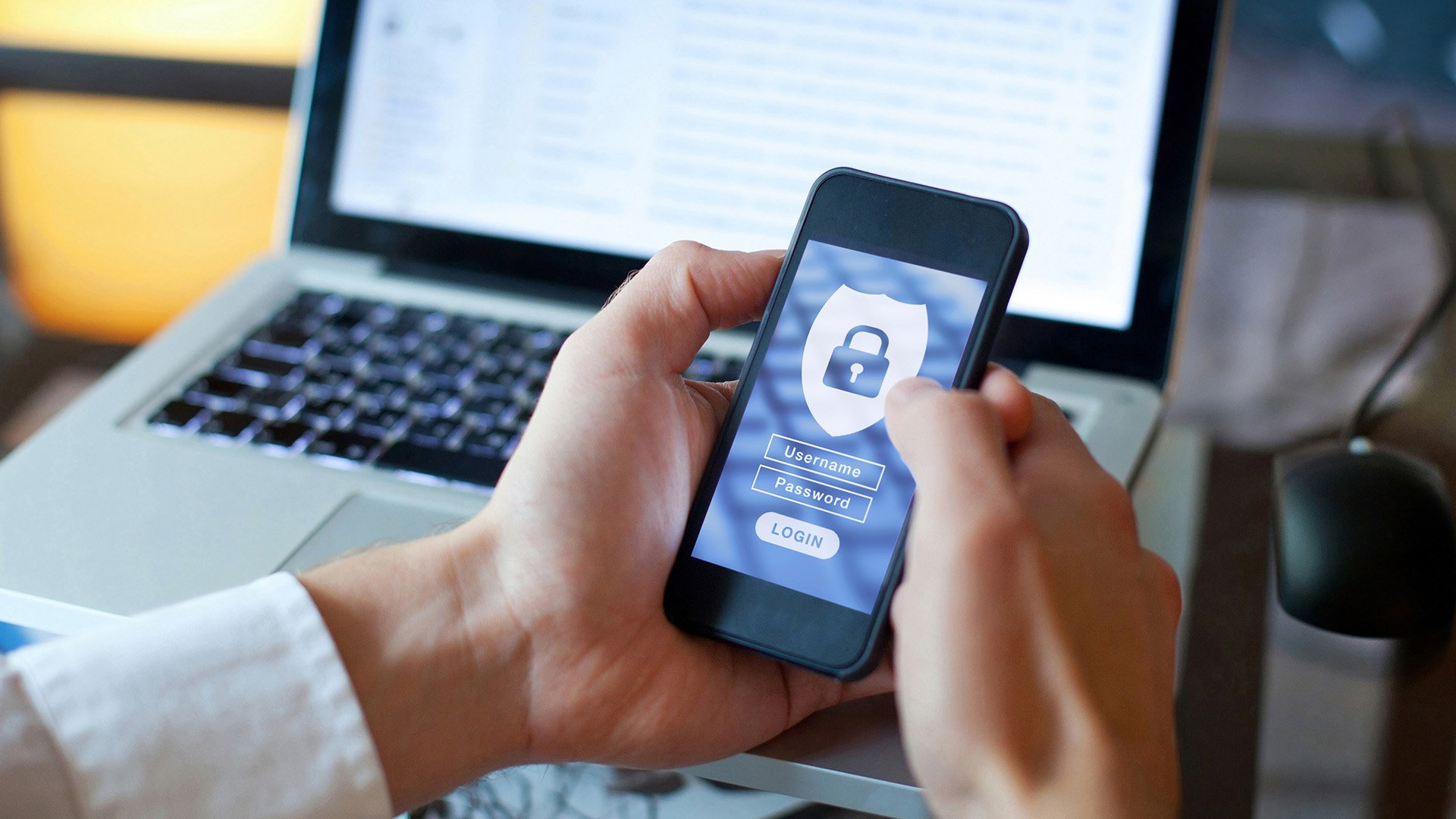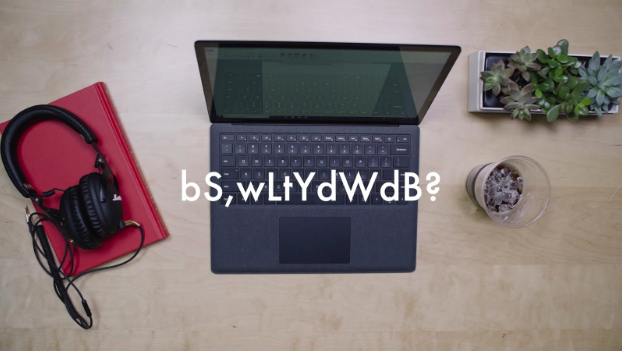Nobody likes passwords. Eventually they’ll be replaced by a new technology, maybe passkeys, maybe something that hasn’t been invented yet. But most of us still use passwords every day, dozens or even hundreds of them, and remembering them all is just impossible. If you use an easy password like your birthday or your dog’s name, hackers can guess it in a trice. Even if you strain your brain to memorize a painfully random password like 4Y3s}#Rhkg7Y;A'5, it’s no good if you use it on more than one site because a breach at one service could expose all your others. The only solution (and it’s a good one!) is to rely on a password manager. With the help of such a utility, using a different strong password for every website is a snap. We'll show you how.
Hard to Guess Can Mean Hard to Remember
Proper, full-scale password managers work on all your devices, be they desktops, laptops, smartphones, or tablets. They generate unguessable passwords like Z~/NQ"e5=|OO=qf9, remember them for you, and automatically use those saved passwords to log in to your secure sites.
But there's one snag with this plan. Almost every password manager relies on a master password to lock up all those individual passwords. The master password must be uncrackable because anyone with access to it can unlock all your secure sites. But it must also be memorable, unlike the gibberish from random password generators. If you forget the master password, nobody can help you. On the plus side, this also means a dishonest employee can't break into your password store, and the NSA can't force the company to turn over your data.
The Best Password Manager We've Tested
Let's assume you've done everything right, security-wise. You've installed an antivirus or security suite. A Virtual Private Network, or VPN, wraps your network traffic in protective encryption. And you've enlisted a password manager to deal with your plethora of passwords. You’re still stuck with remembering one insanely secure master password to lock down that password manager. Here are some tips on selecting a password that's both memorable and unguessable.
The Best Black Friday Deals Right Now
- Apple AirPods Pro 2 ANC Earbuds With USB-C Charging Case for $153.99 (List Price $249.00)
- Samsung Galaxy Tab A9+ 64GB Wi-Fi 11" Tablet for $149.00 (List Price $219.99)
- Fire TV Stick 4K Streaming Device With Remote (2023 Model) for $21.99 (List Price $49.99)
- Blink Outdoor 4 1080p Security Camera (3-Pack) for $99.99 (List Price $259.99)
- Dell Inspiron 15 3535 Ryzen 7 1TB SSD 16GB RAM Laptop for $449.99 (List Price $699.99)
- Seagate Portable 4TB External USB 3.0 Hard Drive for $99.90 (List Price $124.99)
- Bose QuietComfort Wireless Noise Cancelling Headphones for $199.00 (List Price $349.00)
*Deals are selected by our commerce team
1. Make Poetic Passwords
Everybody has a favorite poem or song they'll never forget. It might be a line from Shakespeare, a Taylor Swift tune, or something snarky by the Bonzo Dog Doo Dah Band. Whatever the stanza or verse, you can turn it into a password. Here's how.
Start by writing down the first letter of each syllable. Use capital letters for stressed syllables, and retain any punctuation. Let's try this line from Romeo and Juliet: "But soft, what light through yonder window breaks?" From that, you'd get bS,wLtYdWdB?. You could add A2S2 for Act 2, Scene 2 if that's something you'll never forget. Or 1597 for the play's year of publication.

If the passage doesn't have a strong meter, you can just take the first letter of each word, using the existing punctuation and capitalization. Starting with the quote "Be yourself; everyone else is already taken. - Oscar Wilde", you could come up with By;eeiat.-OW. Adding a memorable number rounds out the password, perhaps 1854 (his birthdate) or 1900 (his death).
Your poetic password will be completely different from these examples, of course. You'll start with your own meaningful song or quotation and convert it to a unique password nobody else could guess.
2. Make Your Password a Passphrase
Password pundits always advise including all four types of characters: uppercase letters, lowercase letters, digits, and punctuation. The reasoning is that by expanding the pool of characters, you vastly expand the time required to crack the password. But sheer length also serves to make cracking harder, and one way to achieve a long, memorable password is to use a passphrase.

 It's Surprisingly Easy to Be More Secure Online
It's Surprisingly Easy to Be More Secure Online
Snarky, smart webcomic XKCD took aim at wacky password schemes that suggest starting with a common word, replacing some of the letters with similar-looking numbers, then tacking on a few extra characters. That can leave you wondering. Was it Tr0ub4dor&3, or Tr0ub4dor3&? Or maybe Tr0m30ne&3? A passphrase like correct horse battery staple is significantly more difficult to crack, due to its length, but also much easier to remember.
Not all password managers permit spaces in the master password. No problem! Just pick a character like the hyphen or equals sign to separate the words. Pro tip—don’t use a separator that requires pressing the shift key. Pick words that don't naturally go together, then invent a mnemonic story or image to link them. What would you picture for nether-urgent-account-donkey?
If you have trouble coming up with unrelated words for your passphrase, there are many online passphrase generators, including the aptly named CorrectHorseBatteryStaple.net. You may quite reasonably worry about using a passphrase generated by someone else's algorithm. In that case, you could generate multiple passphrases and clip out a word from each.

 Simple Tricks to Remember Insanely Secure Passwords
Simple Tricks to Remember Insanely Secure Passwords
3. Pad Your Password to Make It Longer
Venerable PC maven Steve Gibson suggests the secret to long, strong passwords is padding. If an attacker can't crack your password using a dictionary attack or other simple means, the only recourse is a brute-force scan of all possible passwords. Every added character makes that attack massively more difficult.
Gibson's website offers a Search Space Calculator that analyzes any password you enter based on the character types used and the length. The calculator estimates how long a brute-force attack would take to crack a given password. It's not a password strength meter but rather a cracking-time meter, and it's instructive to see how the cracking time goes up when you lengthen the password.

I don't try to watch people enter their passwords, but I've noticed quite a few that, based on hand motions, appear to end in three exclamation points. That's not the padding I'd suggest. First, it requires the shift key. Second, it's too predictable. I wouldn't be surprised if password-cracking toolkits already included "!!!" in their dictionaries.
Recommended by Our Editors
Instead, pick two close-at-hand keys and alternate, adding something like vcvcvcvc. Or choose three characters, like lkjlkjlkjlkj. Gibson's calculator says it would take over 45 years for a "massive cracking array" to crack bS,wLtYdWdB? (the Romeo and Juliet password from my earlier example). Adding vcvcvcvc raises that to more than a quadrillion centuries.
Bonus Tip: Use Multi-Factor Authentication
Congratulations! You’ve devised a long but totally memorable master password. There’s just one thing. A shoulder-surfer with a good memory who sees you type that password could use it to open your password vault. More likely, a hacker using a data-stealing Trojan could capture the password. Now what?
The solution is to bolster master password protection with another type of authentication. Multi-factor authentication typically involves at least two of these three types: something you know (like a password), something you have (like a smartphone app), and something you are (like a fingerprint).

 What Is Two-Factor Authentication?
What Is Two-Factor Authentication?
Most password managers let you use an authenticator app for added security. Now a password thief can’t get into your vault using the password alone. Without the code from your authenticator app, there’s no way to access those treasured account passwords.
Long, Strong, and Memorable
Once you've invested in a password manager and converted all your logins to use strong, unique passwords, the only password you’re still stuck with remembering is the one that opens the password manager itself. That master password unlocks everything else, so you really need to spend some time coming up with a master you can remember easily but that would be impossible for someone else to guess or crack.
Work up a password based on a poem, song, or famous quote. Or create a passphrase, linking unrelated words with a memorable image or story. Then, add some easy-to-type padding. You'll wind up with a master password that's both memorable and uncrackable.
For more password tips, read How to Create a Strong Password Generator.
Like What You're Reading?
This newsletter may contain advertising, deals, or affiliate links. Subscribing to a newsletter indicates your consent to our Terms of Use and Privacy Policy. You may unsubscribe from the newsletters at any time.
Thanks for signing up!
Your subscription has been confirmed. Keep an eye on your inbox!
Sign up for other newsletters

 (Credit: René Ramos; WeerajitJames, New Africa/Shutterstock.com)
(Credit: René Ramos; WeerajitJames, New Africa/Shutterstock.com)













